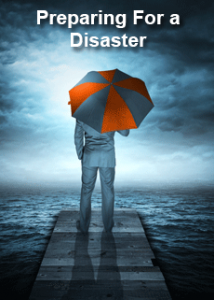 Certain parts of the country are more inclined to natural disasters than others, where there’s Tornado Alley right in the heartland, earthquakes in the West Coast and hurricanes in the East and Gulf coasts. But these and other types of inclement weather such as storms, floods can occur anywhere.
Certain parts of the country are more inclined to natural disasters than others, where there’s Tornado Alley right in the heartland, earthquakes in the West Coast and hurricanes in the East and Gulf coasts. But these and other types of inclement weather such as storms, floods can occur anywhere.
Owing to the fact that nature is unpredictable, it is highly recommended that you take certain measures to protect your home and keep your loved ones safe. Here are 5 tips to get you on the right track.
Determine Your Risks
It is a good idea to know the common hazards in the area where you live especially if you’ve just moved to the area in order to help you make better preparation plans. Generally, you should take preventive measures against the hazards that have the most chances of occurring in your area and work your way down the list.
A natural disaster risk map can be had from the nonprofit Federal Alliance for Safe Homes, which can help determine the hazards in your area. This would also be the right time to reexamine your insurance policies and ensure you are covered against such perils.
Take Care Of Your Home’s Vulnerabilities
Generally, homeowners often feel helpless in inclement weather, but there are a few storm specific improvement strategies that can significantly reduce the risk of damage to your home. In order to prevent damage from hurricanes, you can build a safe room, install storm shutters or mount hurricane straps to prevent your roof from blowing off in case of fierce winds. Generally, taking safety measures against one risk can help you can address other threats as well.
Pack A Stand-By Emergency Kit
Regardless of whether your home is located in a disaster prone area or not, you must have an emergency kit handy. A basic emergency kit should include the following items:
- Non-perishable food (three day supply)
- One gallon of water (per person per day)
- First aid kit
- Flashlight with extra batteries
- Whistle
- Traveler’s checks, change and cash
- Cellphone with chargers
Once you’ve made this basic emergency kit, you should consider adding items that address any special needs such as pets, children or any specific medical conditions. While doing this, also consider making an emergency go bag, one that’s easily accessible in the event you need to evacuate.
Make A List Of Household Items
Compiling an inventory may seem like a daunting task, but will make it easier to recall all your items should you lose them in a disaster. This will also help when you’re making your insurance claim and applying for Federal disaster aid.
Make And Practice An Emergency Action Plan
You must create a strong emergency plan, one that addresses aspects such as family communications; escape routes, shutting of utilities such as electricity, water and natural gas. Every member of the family should be able to state the plan to be certain of no misunderstanding or miscommunication. In addition, you should rehearse this plan to ensure it is doesn’t have any weak spots.
Extreme natural disasters around the world such as the Asian Tsunami and Hurricane Katrina have made our vulnerabilities clearer, and although preparing for them is not an overnight task, taking concrete steps can greatly help reduce your risks and give you peace of mind.



About The Author: Kenneth Le
More posts by Kenneth Le